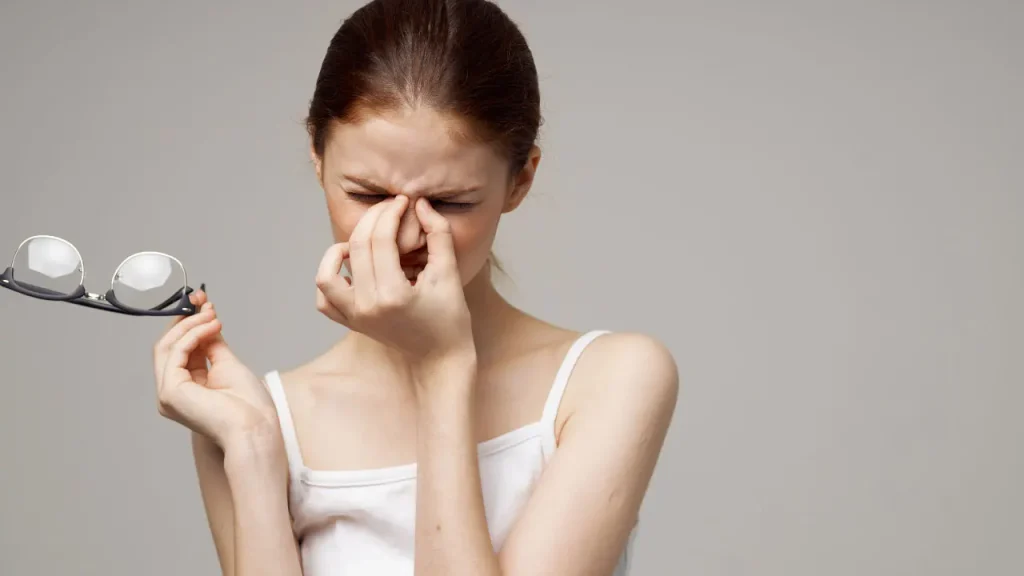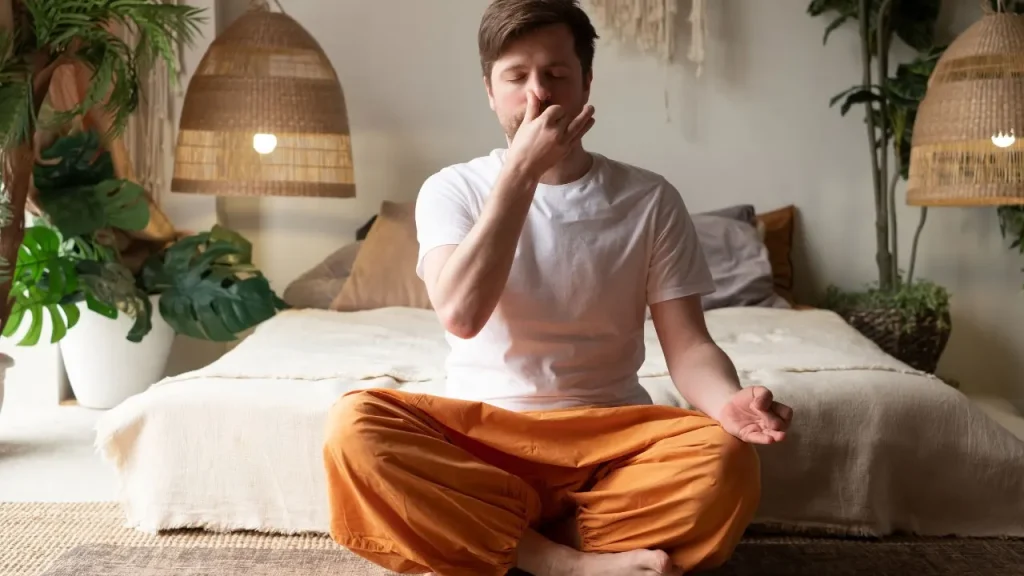The Ultimate Breathing Exercise to Lower Blood Pressure: Mastering the Art of Breathing
High blood pressure, or hypertension, is a pervasive and pressing concern that affects the lives of millions across the globe, firmly establishing itself as one of the most prevalent cardiovascular conditions. While medical treatments and pharmaceutical interventions undoubtedly play a pivotal role in managing this condition, there exists an often underestimated and underappreciated dimension to hypertension control: the remarkable power of our breath.
In the pages that follow, we will embark on a comprehensive exploration of high blood pressure. Our journey will encompass the multifaceted landscape of this condition, shedding light on its intricate causes, insidious symptoms, nuanced prognosis, and the diverse array of conventional treatment options available. We’ll delve into the pharmacological interventions and lifestyle adjustments that form the cornerstone of hypertension management.
Beyond the well-trodden avenues of traditional treatments, we will venture into a realm that has gained prominence in recent years, a realm where ancient practices meet modern understanding. We will focus on the age-old art of breathing exercises. Additionally, we will explore the potential benefits of using an ancient remedy, Eucommia ulmoides, in the context of hypertension management. These techniques, often overshadowed by the prominence of medications, hold promise as complementary tools in reducing high blood pressure.
You May Also Like:
NatureMyst Krill Oil: A Review of the Facts About This Leading Omega-3 Product
The Ultimate Breathing Exercise to Lower Blood Pressure: Mastering the Art of Breathing is an original (HealthXWire) article.
Breathing exercise to lower blood pressure:
Symptoms and causes
Hypertension, aptly dubbed the “silent killer,” is notorious for its insidious and often asymptomatic nature, allowing it to progress stealthily over the years. While its initial stages may not exhibit overt signs, it is paramount to maintain vigilance and tune into potential indicators of high blood pressure. For instance, frequent and severe headaches, particularly when they manifest in the morning, can serve as subtle yet persistent warnings of elevated blood pressure. These headaches often stem from increased pressure on the blood vessel walls within the brain.
Understanding the causes of hypertension is equally crucial. Elevated blood pressure can be the result of multiple factors, such as genetics, lifestyle choices, and underlying health conditions. A diet high in sodium, physical inactivity, obesity, and excessive alcohol consumption can contribute significantly. Additionally, stress and chronic kidney disease can also be causal factors in hypertension. Therefore, acknowledging these potential causes is essential in comprehensive hypertension management.
Shortness of breath, difficulties in breathing, or a pervasive sense of breathlessness, particularly during physical activities or daily tasks, can signify hypertension. Elevated blood pressure strains the heart, subsequently diminishing the supply of oxygen to the body’s tissues.
Unexplained and severe chest pain should never be dismissed, as it may arise from various causes, including hypertension, underscoring the necessity for a comprehensive medical evaluation to rule out potential cardiovascular issues.
Dizziness or a feeling of lightheadedness, especially when transitioning from a seated to standing position, may be associated with high blood pressure. Elevated blood pressure can affect blood flow to the brain, giving rise to transient spells of dizziness or faintness.

Breathing exercise to lower blood pressure:
Prognosis and complications
Comprehending the long-term consequences of hypertension is paramount in emphasizing the significance of its proactive management. Uncontrolled high blood pressure can pave the way for a myriad of severe complications, warranting meticulous attention to its treatment and control.
- Heart Disease: Hypertension emerges as a substantial contributor to heart disease, a category encompassing a spectrum of cardiovascular ailments. It significantly increases the risk of conditions such as heart attacks, heart failure, and the thickening of the heart muscle, known as hypertrophy. Unrelenting pressure on the arterial walls places excessive strain on the heart, making it work harder and ultimately predisposing it to these critical issues.
- Stroke: High blood pressure noticeably escalates the likelihood of stroke, a catastrophic event that can result in long-term disability or even death. The sustained elevated pressure within the blood vessels makes them susceptible to damage, including the formation of blood clots or the weakening of vessel walls, both of which can precipitate a stroke.
- Kidney Damage: Prolonged hypertension can inflict considerable harm upon the kidneys, impairing their vital function. The kidneys play a pivotal role in regulating blood pressure, and the chronic stress imposed by hypertension can lead to kidney damage over time.
- Vision Problems: Hypertension’s repercussions extend to the eyes as well. Elevated blood pressure can impair blood vessels in the eyes, potentially resulting in vision problems and, in some cases, contributing to vision loss. Retinal damage and other ocular issues are possible outcomes of uncontrolled hypertension.
- Metabolic Syndrome: High blood pressure often forms part of a broader spectrum known as metabolic syndrome. This amalgamation of conditions includes elevated blood pressure, obesity, abnormal lipid profiles, and impaired glucose metabolism. Metabolic syndrome significantly increases the risk of heart disease, stroke, and type 2 diabetes, emphasizing the intricate relationship between hypertension and other metabolic disorders.
Understanding these potential complications underscores the paramount importance of effectively managing blood pressure. It serves as a compelling motivation for individuals to adopt a proactive approach in controlling their hypertension, not only to alleviate its immediate symptoms but to safeguard against the life-altering consequences it may precipitate.


Breathing exercise to lower blood pressure:
Conventional treatment options
Conventional medical strategies for addressing high blood pressure have a proven track record of effectiveness, offering individuals a range of well-established approaches to manage this condition. These methods encompass lifestyle modifications and a selection of medications, all of which can be integral components of hypertension management.
- Dietary Changes: Implementing dietary adjustments plays a fundamental role in hypertension management. Reducing sodium intake, in particular, has a substantial impact on blood pressure. Alongside this, increasing the consumption of potassium-rich foods can help offset the effects of high sodium intake. The DASH (Dietary Approaches to Stop Hypertension) diet is a well-recognized dietary plan specifically designed to lower blood pressure. It emphasizes the consumption of fruits, vegetables, lean proteins, and whole grains while limiting salt and processed foods. Adhering to this diet can lead to significant blood pressure reductions.
- Physical Activity: Regular exercise is an indispensable pillar of high blood pressure management. Engaging in physical activity on a routine basis not only contributes to improved heart health but also facilitates weight loss, a key factor in lowering blood pressure. Exercise promotes the dilation of blood vessels, enhanced circulation, and stress reduction, all of which are beneficial for those with hypertension.
- Medications: A wide spectrum of antihypertensive medications is available, each belonging to distinct drug classes with varying mechanisms of action. These medications include diuretics, beta-blockers, ACE inhibitors, and calcium channel blockers, among others. The choice of medication hinges on individual needs, with healthcare professionals prescribing the most suitable option based on the patient’s specific condition and potential side effects. Monitoring and adjusting medications as needed is crucial in optimizing blood pressure control.
Consulting a healthcare professional is a vital step in the journey to effective hypertension management. These experts can delve into the underlying causes of high blood pressure, assess individual risk factors, and tailor treatment plans to suit each patient’s unique circumstances. This personalized approach ensures the most effective, safe, and sustainable means of managing high blood pressure while mitigating the risk of complications.
Breathing exercise to lower blood pressure:
Breathing and blood pressure
Breathing exercises exert a remarkable influence on blood pressure, representing a non-pharmacological approach that can significantly impact cardiovascular health. These exercises, which encompass controlled, deep, and mindful breathing techniques, have the power to reduce stress and induce a sense of relaxation. As stress is a known contributor to elevated blood pressure, these practices can play a pivotal role in hypertension management.
When engaging in deep breathing, we stimulate the parasympathetic nervous system, often referred to as the “rest and digest” system, which counters the effects of the “fight or flight” response triggered by stress. This shift promotes vasodilation, or the widening of blood vessels, ultimately lowering blood pressure. Deep, slow breathing also enables our body to release nitric oxide, a natural vasodilator.
Furthermore, regular and controlled breathing exercises can improve heart rate variability (HRV), a measure of the variation in time between successive heartbeats. High HRV is associated with better cardiovascular health and can help regulate blood pressure.
Incorporating breathing exercises into your daily routine, along with conventional treatments and lifestyle modifications, provides a holistic and comprehensive approach to managing blood pressure. These techniques not only alleviate symptoms but also address the underlying causes of hypertension, fostering better cardiovascular health and overall well-being.


Breathing exercise to lower blood pressure:
Exploring complementary approaches
While conventional treatments remain a cornerstone in the management of high blood pressure, a growing number of individuals are exploring complementary approaches to enhance their overall well-being. Nutritional supplements, in particular, have garnered attention for their potential to augment traditional hypertension management.
One notable product in this realm is JING Capsules, a standout supplement from Superfeast that is enriched with Eucommia ulmoides. This herb has a long-standing history in traditional Chinese medicine, celebrated for its myriad health benefits. Among its many attributes, Eucommia ulmoides is believed to offer support for cardiovascular health, making it an enticing option for those in search of complementary methods to address hypertension.
Eucommia ulmoides, commonly referred to as “Du Zhong” in traditional Chinese medicine, is derived from the bark of the Eucommia tree native to China. It has been extensively used in this ancient healing tradition for its versatile properties. While it is not a replacement for prescribed medications or traditional treatment methods, Eucommia ulmoides holds promise as a complementary tool in the broader arsenal against high blood pressure.
One of the primary attractions of Eucommia ulmoides is its potential to support cardiovascular health. This herb is thought to have a calming effect on the nervous system, which, in turn, may help reduce stress, a known contributor to hypertension. Additionally, Eucommia ulmoides contains antioxidants, compounds that protect blood vessels and combat inflammation, thus promoting healthier cardiovascular function.
Furthermore, this herb may improve blood circulation, aiding in reducing the pressure on arterial walls. Its stress-reducing properties can also play a role in blood pressure management. While further research is needed to explore the full extent of its effects on hypertension, its long history of use and emerging scientific interest make it an intriguing consideration for individuals seeking a holistic approach to their cardiovascular well-being.
Incorporating JING Capsules or other Eucommia ulmoides-based supplements into a comprehensive hypertension management plan is a decision that should be made in consultation with a healthcare professional. These supplements should complement, not replace, prescribed medications and lifestyle adjustments, serving as a supportive element in the pursuit of better cardiovascular health.
Breathing exercise to lower blood pressure:
Final thoughts
In conclusion, high blood pressure is a common yet potentially severe condition that demands diligent and comprehensive management. Conventional treatments, including lifestyle adjustments and a range of prescribed medications, serve as the foundational framework for controlling hypertension and mitigating its detrimental effects on our cardiovascular health.
However, our exploration has revealed that hypertension management need not be confined solely to the traditional realm of medicine. Complementary practices, such as mindfulness-based breathing exercises and the integration of herbal supplements like JING Capsules, introduce an intriguing dimension to this multifaceted battle. The use of Eucommia ulmoides, with its potential to support cardiovascular health, exemplifies the expanding interest in holistic approaches.
These complementary tools should not be dismissed; rather, they should be embraced as adjunctive components of a well-rounded hypertension management strategy. While they do not replace conventional treatments, they can provide vital support in alleviating symptoms, reducing stress, and potentially addressing the underlying causes of high blood pressure.
Nonetheless, it is imperative to underscore the importance of consulting with healthcare professionals. They possess the expertise to assess your individual needs, risks, and circumstances, enabling the creation of a personalized hypertension management plan. This tailored approach ensures the seamless integration of both conventional and complementary methods, offering a harmonious synergy in the quest for better cardiovascular health.
In the face of high blood pressure, knowledge, and proactive choices are your most potent allies. With conventional treatments and holistic practices working in tandem under the guidance of healthcare professionals, you can embark on a journey toward mastering the art of blood pressure control, ultimately safeguarding your long-term well-being and reducing the risks of associated health complications.


Further Reading:
Chinese Medicine. Traditional application and modern pharmacological research of Eucommia ulmoides Oliv.
Hindawi. Health-Promoting Properties of Eucommia ulmoides: A Review
J Ethnopharmacol. Eucommia ulmoides Oliv.: ethnopharmacology, phytochemistry and pharmacology of an important traditional Chinese medicine
Molecules. Neuroendocrine–Immune Regulatory Network of Eucommia ulmoides Oliver
Important Note: The information contained in this article is for general informational purposes only, and should not be construed as health or medical advice, nor is it intended to diagnose, prevent, treat, or cure any disease or health condition. Before embarking on any diet, fitness regimen, or program of nutritional supplementation, it is advisable to consult your healthcare professional in order to determine its safety and probable efficacy in terms of your individual state of health.
Regarding Nutritional Supplements Or Other Non-Prescription Health Products: If any nutritional supplements or other non-prescription health products are mentioned in the foregoing article, any claims or statements made about them have not been evaluated by the U.S. Food and Drug Administration, and such nutritional supplements or other health products are not intended to diagnose, treat, cure, or prevent any disease.
Table of Contents


